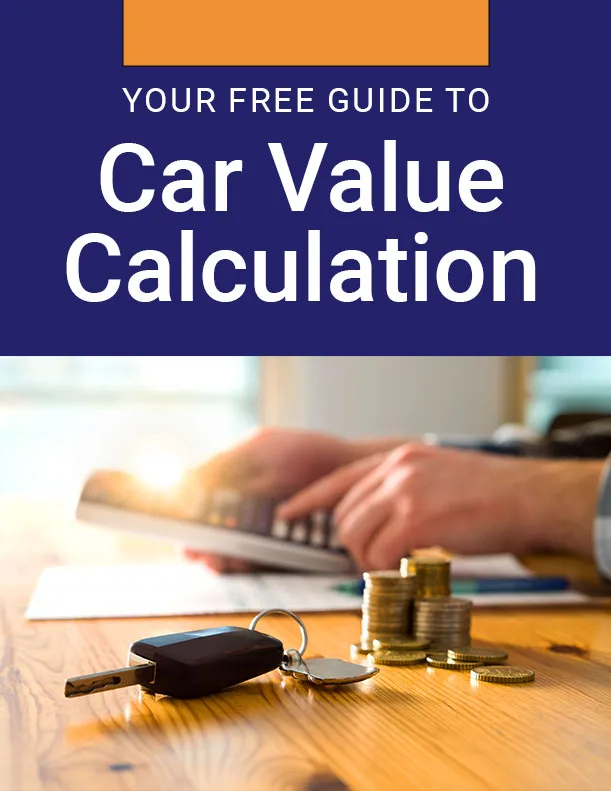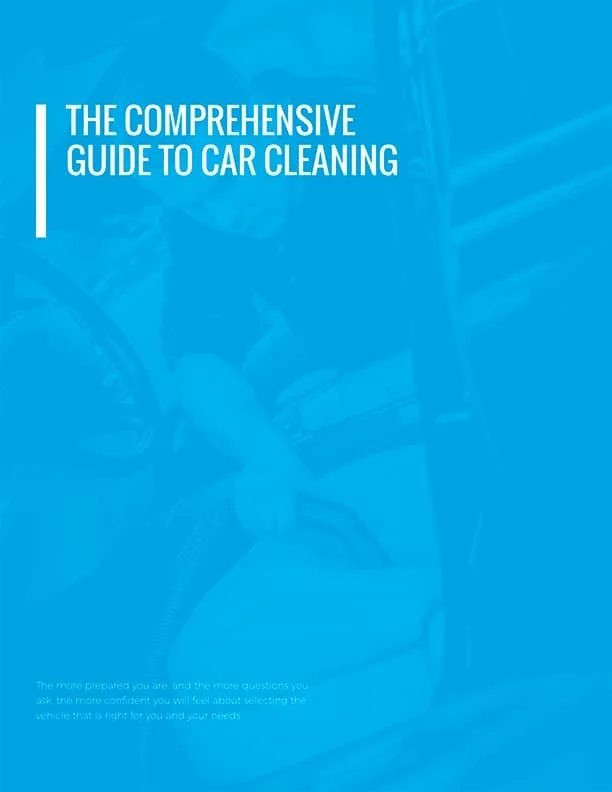Your Free Guide to Gas Vouchers
Your Free Guide to Gas Vouchers
We are privately owned and not affiliated with the government in any way or form.

What is a gas voucher?
A gas voucher is a type of card that has preloaded funds specifically to buy gasoline. Different organizations and entities may give vouchers in the form of a gift card that you use like a credit or debit card by inserting the card into the reader at the gas station at the time of purchase.
Gas vouchers are also commonly used as a form of reimbursement for individuals who have a lot of fuel and/or other transportation-related expenses. For example, employees who travel for work may receive a gas voucher from their employers after completing a business trip.
There are various types of gas vouchers available, and the kind you may be able to get depends on the organization supplying them.
The most common expenses that can be paid using gas vouchers include costs from the following sources:
- Work or job interviews
- Medical appointments
- Errands, like grocery shopping
- School and career training
- Emergency travel
- Funerals
- Escape disasters
Whoever provides fuel vouchers may have specific requirements and stipulations for how or where you spend the funds. You may qualify for gas vouchers from one organization but not another. Not to mention, some fuel funds may require a bit more effort to obtain than others.
Where to Find Gas Vouchers
There are many groups that have gas vouchers and transportation services available that can help you get to where you need to be. Government programs, charities, non-profits, and religious organizations are just a few groups that may be able to assist you.
Government Gas Assistance
Area Agency on Aging (AAA) is a government-operated association run by public officials or private non-profit organizations. As such, the agency near you may have a different name. AAA – not to be confused with the automotive club – specifically helps residents 60 years of age or older and those with physical or mental disabilities of all ages.
These centers receive government grants to set up transportation so you can visit your doctor or attend other necessary health care appointments. You may even be able to receive travel assistance to purchase groceries as well. If you qualify, AAA could also give you day- or month-long passes for public transportation, such as city buses.
National Community Action Partnership (CAP) is a non-profit organization that receives federal funding from the Community Services Block Grant. Community Action Agencies, or CAP agencies, run several programs, including the Transportation Assistance Program, that gives gas vouchers so you can continue to travel to work or medical appointments.
You can call 211 to find local transportation resources, including gas vouchers. The Federal Communications Commission (FCC) designated the three-digit number for social service referrals operated by local organizations such as the following:
- Charities
- Salvation Army, Good Samaritan, Goodwill, and United Way
- Foundations
- American Cancer Society, Mercy Medical Angels, Leukemia and Lymphoma Society, and Aplastic Anemia and MDS International Foundation
- Churches and religious groups
- Insurance companies
A 211-phone representative can give you a list of local resources, or you can search for help in your area on the 211 website (211.org). You can search based on the following transportation topics:
- Bus passes, gasoline vouchers, and transportation expense assistance
- Disabled and senior ride programs
- Local bus and ride-sharing programs
- Automobiles, repairs, and rentals
- Travel and tourism
County governments may provide fuel assistance or some gasoline payment if you are a resident in need who qualifies based on age, income, or medical condition. You can check with your state’s Department of Human Services or Social Services offices.
You can find a link to your state’s department in the table below.
Charities and Non-Profit Foundations
The Salvation Army assists individuals and families nationwide with food, clothing, furniture, and more, including distributing free gas cards and general transportation help. Fuel vouchers, rides, and public transportation passes can help you get to school, a job interview, professional training, or a doctor’s appointment.
The organization may be able to give you gas vouchers or set up transportation through its “Emergency Family Services” or Case Management process, depending on your relationship with the local agency. Although the Salvation Army operates in every state and in most major areas, the availability of resources varies.
Good Samaritan gives qualifying low-income, elderly and/or disabled residents gas assistance for medical appointments. Good Samaritan also has bus and transit tickets for job interviews and job-searching activities.
Goodwill partnered with Lyft to expand transportation access for unemployed workers to get free rides to career trainings, interviews, and a job. Through the Jobs Access Program, you can ask for a free ride in a vehicle (rideshare) or on a bike or scooter.
United Way is a non-profit charity that established Ride United Transportation Access by partnering with Lyft. This program helps reduce transportation barriers and can help you get to a job or interview, a doctor’s appointment or medical care, a grocery store, or other locations to handle emergencies.
United Way also teamed up with DoorDash for Ride United Last Mile Delivery, so you can access food even if you cannot drive.
Most foundations that offer gas vouchers and transportation services focus on individuals with medical conditions. Below are some organizations that provide medical transportation if you have a qualifying diagnosis:
- The American Cancer Society provides free rides to cancer treatment appointments.
- Mercy Medical Angels have ground and air transportation if you have a life-threatening disease or serious health issue. It provides gas cards and tickets for buses, trains, and commercial flights.
- Leukemia and Lymphoma Society and Aplastic Anemia and MDS International Foundation pay up to $500 annually for travel assistance if you have a qualifying chronic illness.
However, you can often find organizations that provide gas vouchers based on other factors. For example, the Children of Restaurant Employees (CORE) helps workers in the food and beverage industry in all 50 states, Washington D.C. and Puerto Rico. The organization provides grants for restaurant employees, their spouses, or their children in a medical crisis, injury, death, or natural disaster.
You may be able to qualify for this type of gas grant if you work at any of the following establishments:
- Cafeteria or dining hall
- Casual dining
- Catering
- Concession stands
- Fast-casual
- Fine dining
- Food truck
- Hotel bar, dining, or in-room service
- Quick service
Religious Organizations
There are plenty of religious organizations that exist to help those in need. One option to learn about available transportation assistance is to visit your place of worship (if you have one) to ask for help. Otherwise, you can visit any other place of worship to inquire about gas vouchers or other forms of transportation assistance.
The Society of St. Vincent de Paul is a Catholic group that may provide gas assistance, such as money for gasoline. In addition to fuel funds, the organization works with partners to supply free or low-cost vehicle repair and purchase services. Volunteers with the Society of St. Vincent de Paul can also assist you by bringing food, clothing, and other needs to your home.
General Requirements to Get a Gas Voucher
In most cases, gas vouchers and other transportation services require you to demonstrate a financial need in order to participate. Many organizations provide benefits to specific groups, like veterans, seniors, or those with a health diagnosis. You may need to prove that you qualify by providing financial, medical, or other documentation.
You may also need to verify your medical appointments with the specific program in order to schedule pick-ups and drop-offs. Most charities focus on at-risk populations, such as:
- Low-income households and those participating in government programs.
- Homeless individuals.
- Senior citizens and children.
- Veterans, single parents, and disaster victims.
- Individuals escaping domestic abuse.
- Individuals with medical conditions, like cancer or HIV/AIDS.
However, specific requirements depend on the organization offering the voucher. For instance, with the CORE organization, you or your spouse must work in the restaurant industry.
How to Get Free Transportation With the N.E.M.T. Program
Medicaid pays for emergency and non-emergency medical transportation (NEMT). Emergency medical transportation usually involves an ambulance or medical flight, while non-emergency medical transportation may occur in a taxi, car, van, public bus, or subway.
A medical emergency requires immediate attention, such as having a heart attack or following a serious accident. A non-emergency medical incident relates to health care but is typically scheduled, such as doctor’s appointments.
The NEMT program cannot take you to non-medical destinations, like restaurants, homes of friends and family members, etc. Your state may also set mileage, location, and wait time limitations.
States have different guidelines about non-emergency medical transportation, but the ride must be for a specific health care purpose and be considered “necessary.” However, in general, most states allow individuals to get a free ride through this program if they meet one or more of the following:
- Do not have a vehicle or a working vehicle
- Do not have a valid driver’s license
- Have developmental, cognitive, physical, or mental limitations
- Are unable to be alone
- Have no other reasonable way to travel
You may need to make an appointment with a Medicaid-approved health care provider before scheduling a ride. You can speak with your Medicaid caseworker or a ride service agency about setting up a pick-up time and location. You may share the ride with other people.
You should also cancel the ride if you no longer need it or change the appointment. If you miss several scheduled rides, Medicaid may restrict your ability to get a ride in the future.
Learn more about NEMT on the Centers for Medicare and Medicaid Services (CMS) website here: https://www.cms.gov/Medicare-Medicaid-Coordination/Fraud-Prevention/Medicaid-Integrity-Program/Education/Non-Emergency-Medical-Transport
Other Ways to Save on Gas
If you do not qualify for a gas voucher, you can still find ways to reduce your fuel costs. The following tips may be able to help you lower your fuel spending, help you stay on budget, and make visits to the pump more enjoyable.
1 – Utilizing Rideshare Programs
You may think of Uber, Lyft, and similar apps when you hear “rideshare.” These transportation options offer a few benefits, such as eliminating vehicle ownership expenses, cutting down on your driving time, reducing the need for car insurance payments.
The typical annual cost of vehicle ownership is around $11,000. Rideshare apps average $0.80 a mile in 2022, so you could save money with Uber or Lyft if you usually drive less than 13,750 miles a year.
But Uber and Lyft are not the only ways to hitch a ride. Many cities have carpool and rideshare programs to reduce the number of cars on the road. Check with your city or county about local rideshare programs.
Your company may also have an employee vehicle pool, or you could initiate one with your coworkers. Unlike rideshare apps, you usually do not pay for each carpool ride. Instead, your group may collectively chip in for gas and tolls. Or, each member of the group takes a turn driving the carpool. Carpools could be more affordable (and fun) than rideshare apps.
Driving More Slowly and Less Aggressively
Your need for speed could be costing you more than just speeding tickets. Speeding increases the amount of fuel your vehicle uses due to air and surface (tires on the road) resistance.
Your fuel economy drops significantly when you drive 50 miles per hour (mph) or faster, around 7% for every five mph. If the price at the pump is $4.50 a gallon, it is like paying 31 cents more per gallon.
Similarly, rapid acceleration and frequent braking (aggressive driving) could lower your gas mileage by 10 to 40%, depending on your vehicle. It could cost you between 45 cents and $1.80 more per gallon.
2 – Removing Excess Weight
The golf clubs in your trunk or cargo hold on your roof could increase your costs at the pump. Your vehicle uses more fuel to make up for weight and wind drag from after-market products, and it could lose 1% of its fuel efficiency per extra 100 pounds.
If your vehicle has a cargo box on its roof or rear mount, you could lose fuel efficiency between 2 and 17%. When not in use, removing excess items and your cargo hold could save you money on gas.
3 – Keeping Up With Regular Car Maintenance
Checking and improving your motor oil, tires, and other parts can influence your vehicle’s fuel efficiency. Efficiency can decrease if parts are worn, broken, or old.
Although mechanical problems are expensive to fix, the disrepair may be costing you at the pump. For instance, a faulty oxygen sensor can decrease your mileage by up to 40%.
Here are some common part failures that can diminish your gas mileage:
- Mass airflow sensor measures the engine’s airflow and tells the vehicle’s computer to regulate the introduction of fuel. Inaccurate readings can make the motor work harder and decrease fuel efficiency.
- Oxygen sensor measures the exhaust flow and also influences fuel injection regulation.
- Spark plugs take electricity from the ignition to the engine to start the vehicle. Worn spark plugs reduce engine efficiency, which decreases gas mileage.
- Air filters stop pollutants that can damage the engine. A dirty air filter can diminish fuel efficiency in older vehicles, but it does not directly affect newer vehicles with computers. Driving with a dirty filter can lower the engine’s efficiency, decreasing the gas mileage on vehicles of any age.
- Tire pressure can affect the fuel efficiency by up to three percent. Check and adjust the pressure once a month and before long trips to maintain the proper (and cost-saving) pressure.
Additionally, your miles per gallon may improve if you upgrade your motor oil. Using a higher grade or energy-conserving oil could improve your mileage by 1 to 2%.
4 – Minimizing Your Trips
You can save gas money and time by combining your outings into fewer trips. Several short trips can add up to more miles than doing multiple things in a single outing.
It takes time for a vehicle’s engine to warm up, especially in cold areas or during the winter months. When the engine is warm, your vehicle is the most fuel-efficient, so multiple short trips can use more fuel than one long outing.
If you have multiple errands to run all over town, it may help to get them done at one time rather than spreading them throughout the week. Plan your trips to reduce the number of miles you drive, and make a list of where you need to go and map out the shortest route to reach all stops.
5 – Using Other Forms of Transportation
Alternative transportation methods may not reduce how much you pay for fuel, but they could reduce the number of times you go to the gas station. You may be able to drive less if you can walk or bike to places you need to go.
Public transportation could also be a more affordable option in your area. Major cities often have transit cards for single and multiple trips or durations of time, such as a month or week. Taking public transportation to nearby areas could save you money on fuel, parking, and other driving costs.




